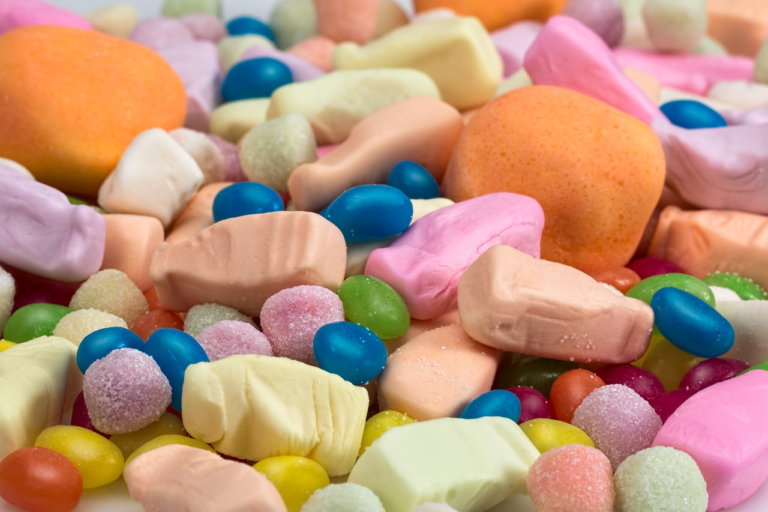A Look at Alternative Sweeteners Safe for Diabetic Consumption
#ez-toc-container {
background: #f9f9f9;
border: 1px solid #aaa;
border-radius: 4px;
-webkit-box-shadow: 0 1px 1px rgba(0, 0, 0, .05);
box-shadow: 0 1px 1px rgba(0, 0, 0, .05);
display: table;
margin-bottom: 1em;
padding: 10px 20px 10px 10px;
position: relative;
width: auto;
}
.ez-toc-container-direction {
direction: ltr;
}
.ez-toc-list-level-1 a{
font-weight:bold;
}
Table of Contents
1. Introduction to Alternative Sweeteners for Diabetics
In recent years, the search for alternative sweeteners has become increasingly important, especially for individuals managing diabetes. Traditional sugar has a well-documented impact on blood glucose levels, making it a challenging ingredient for those trying to maintain stable glucose levels. Understanding the role of sugar in diabetes management and exploring alternative sweeteners can be immensely beneficial for diabetics who aim to enjoy sweet flavors while keeping their condition in check.
Overview of the Impact of Sugar on Diabetes Management
When a person with diabetes consumes sugar, their body often struggles to produce or use insulin effectively, leading to elevated blood sugar levels. This can result in a range of health complications, from immediate symptoms like increased thirst and fatigue to long-term issues such as nerve damage and cardiovascular disease. Regular consumption of sugary foods and drinks might exacerbate these problems, making it crucial for diabetics to monitor and manage their sugar intake closely.
Importance of Choosing Safe Sweeteners for Those with Diabetes
Choosing suitable sweeteners is critical for diabetics who wish to maintain a balanced diet without compromising on taste. Safe sweeteners can provide the sweetness one craves without causing significant spikes in blood glucose levels. These sweeteners help fulfill the desire for sugary tastes while supporting overall diabetes management goals.
Introduction to Various Alternative Sweeteners Available in the Market
A variety of alternative sweeteners are available on the market today, offering diabetics numerous options to satisfy their sweet tooth while adhering to their dietary restrictions. Below is a list of some popular alternative sweeteners that can be considered:
- Stevia
Derived from the leaves of the Stevia plant, Stevia is a natural, zero-calorie sweetener that does not impact blood sugar levels. It is significantly sweeter than sugar, which means only a small amount is needed to achieve the desired sweetness.
- Aspartame
Aspartame is an artificial sweetener found in many sugar-free products. It is approximately 200 times sweeter than sugar and contains minimal calories. However, it should be consumed in moderation, especially by individuals with a rare hereditary disease called phenylketonuria (PKU).
- Sucralose
Commonly known by its brand name Splenda, sucralose is an artificial sweetener made from sugar that is about 600 times sweeter. It is widely used in baking and cooking due to its stability at high temperatures.
- Saccharin
Saccharin is one of the oldest artificial sweeteners available, known for its long shelf life and high sweetness level. It is often used in combination with other sweeteners to mask any bitter aftertaste.
- Acesulfame K
Also known as Ace-K, this sweetener is often used in combination with other sweeteners to enhance sweetness without adding calories. It is heat-stable, making it suitable for cooking and baking.
- Sugar Alcohols (e.g., Erythritol, Xylitol)
Sugar alcohols are naturally occurring sweeteners found in fruits and vegetables. They provide sweetness with fewer calories and have a lesser impact on blood glucose. However, excessive consumption can lead to digestive issues in some individuals.
- Monk Fruit Extract
Monk fruit extract is a natural sweetener derived from the monk fruit. It contains zero calories and is significantly sweeter than sugar, providing a safe option for diabetics.
Choosing the appropriate sweetener involves understanding personal taste preferences, dietary needs, and any health considerations related to these alternatives. Evaluating factors like sweetness intensity, caloric content, and potential side effects can help diabetics make informed decisions. By integrating these alternative sweeteners into their diets, individuals with diabetes can continue to enjoy sweet flavors while effectively managing their blood sugar levels.

2. Understanding Sugar Alcohols
Sugar alcohols, often referred to as polyols, are a unique class of carbohydrates that provide sweetness to foods with fewer calories than regular sugar. Unlike what their name might imply, they are neither sugar nor alcohol in the traditional sense. These compounds occur naturally in various fruits and vegetables but are also manufactured for use in processed foods.
The most common types of sugar alcohols include:
- Erythritol: A sugar alcohol derived from corn or wheat starch, known for its mild sweetness and zero-calorie content.
- Xylitol: Extracted from birch wood or corn cobs, xylitol provides about 40% fewer calories than sugar and is noted for not causing spikes in blood glucose levels.
- Sorbitol: Often used in diet foods, it’s less sweet than sugar and provides fewer calories.
- Maltitol: A common ingredient in sugar-free chocolate and desserts, offering a sweetness close to that of sugar.
Understanding the benefits and potential side effects of sugar alcohols is crucial, especially for individuals managing diabetes.
Benefits of Sugar Alcohols for Diabetics
Sugar alcohols offer numerous advantages to those with diabetes:
- Lower Impact on Blood Sugar: Unlike regular sugar, sugar alcohols have a minimal impact on blood glucose levels. This is because they are absorbed more slowly than sugar and only partially metabolized, resulting in a slower and smaller rise in blood glucose.
- Reduced Caloric Content: Foods that contain sugar alcohols typically have fewer calories compared to those with sugar, aiding in weight management, an essential aspect of diabetes control.
- Prevention of Tooth Decay: Many sugar alcohols like xylitol have been shown to reduce the risk of dental cavities, a common problem among people with diabetes due to dry mouth.
Potential Side Effects of Sugar Alcohols
Despite their benefits, sugar alcohols can cause some side effects:
- Digestive Issues: Because sugar alcohols are not completely absorbed in the small intestine, they can cause gastrointestinal distress, such as bloating, gas, and diarrhea, especially if consumed in large quantities.
- Varying Tolerance Levels: Individuals may react differently to sugar alcohols. For some, even a modest amount can cause discomfort, while others may have no issues even with higher intakes.
Moderation is key when consuming products that contain sugar alcohols. It’s advisable for diabetics to monitor their intake and recognize how their bodies respond.
Incorporating Sugar Alcohols into a Diabetic-Friendly Diet
Sugar alcohols can seamlessly fit into a diabetic diet plan when managed correctly. Here are some guidelines:
- Read Labels Carefully: Check nutrition labels for the presence of sugar alcohols to understand how much you’re consuming. It’s important to also look at the total carbohydrate content of the product.
- Calculate Net Carbs: Since sugar alcohols have a minimal impact on blood sugar, diabetics can subtract half of the grams of sugar alcohols when calculating the net carbs of a product. This can help maintain blood glucose levels more effectively.
- Experiment with Variety: Try different sugar alcohols to find which ones suit your taste and body response. Erythritol is often recommended as it typically causes fewer digestive issues.
- Pair with Fiber: Products that combine sugar alcohols with fiber can help mitigate potential digestive effects and provide additional health benefits like improved satiety.
Ultimately, sugar alcohols can be a useful tool for diabetics when used responsibly. By understanding their effects and integrating them properly into their diets, those with diabetes can enjoy the sweetness without compromising their health.

3. Exploring Natural Sweeteners
In recent years, there has been growing interest in natural sweeteners, driven by increasing awareness of health and wellness. Among various alternatives to refined sugar, stevia and monk fruit have emerged as popular choices. Both are celebrated for their natural derivation and minimal impact on blood sugar levels, making them attractive options for those embracing healthier lifestyles.
Overview of Natural Sweeteners
Natural sweeteners originate from plants and provide sweetness while often offering additional health benefits over artificial sweeteners and refined sugars. They are particularly favored for their lower-calorie content and minimal impact on blood glucose. Two of the most prominent natural sweeteners today are stevia and monk fruit.
- Stevia: Extracted from the leaves of the Stevia rebaudiana plant, stevia is significantly sweeter than sugar. Its main compounds, called steviol glycosides, are responsible for its sweet taste. Stevia is available in various forms including liquid, powder, and granules and is often used in beverages, desserts, and baked goods.
- Monk Fruit: Derived from the monk fruit, or Luo Han Guo, this sweetener has been used for centuries in traditional Chinese medicine. Monk fruit sweeteners contain mogrosides, which are intensely sweet yet do not contain calories or impact blood sugar levels. They are commonly used in beverages and for baking, owing to their heat stability.
Comparison Between Taste and Health Impacts Compared to Sugar
-
Taste Profile:
Both stevia and monk fruit have unique taste profiles that differ from sugar. Stevia has a mildly bitter aftertaste which can be off-putting for some, though newer formulations seek to minimize this. Monk fruit, on the other hand, is often praised for having a more sugar-like taste without any bitterness. -
Caloric Content:
Unlike sugar, which is high in calories and can contribute to weight gain, both stevia and monk fruit contain zero calories, making them suitable choices for weight management. -
Glycemic Index:
Sugar has a high glycemic index (GI), leading to rapid spikes in blood sugar levels. Both stevia and monk fruit are considered low-GI sweeteners, resulting in more stable blood sugar levels. This characteristic is particularly beneficial for individuals with diabetes. -
Health Benefits and Risks:
Sugar consumption is linked to multiple health issues such as obesity, type 2 diabetes, and cardiovascular diseases. In contrast, stevia and monk fruit are linked to several health benefits. For instance, stevia may have antihypertensive and anti-inflammatory properties, while monk fruit is touted for its antioxidant capabilities.
Scientific Evidence Supporting Their Safety for Diabetic Consumption
The safety and benefits of stevia and monk fruit for diabetic individuals have been the subject of numerous scientific studies, demonstrating their potential as safe sugar substitutes.
- Stevia:
Research indicates that stevia does not affect blood glucose or insulin levels, making it a safe option for those with diabetes. A study published in the Journal of Nutrition confirmed that stevia can even improve insulin sensitivity. This makes it not only a sugar alternative but potentially a beneficial inclusion in diabetic diets.
- Monk Fruit:
The mogrosides in monk fruit sweeteners do not impact blood glucose levels, and a study in the International Journal of Food Sciences and Nutrition found that monk fruit extracts exhibit an ability to attenuate diabetic conditions. This poses monk fruit as a promising natural sweetener for those managing diabetes.
The allure of stevia and monk fruit lies not only in their sweetening ability but also in their health benefits and safety for diabetic individuals. As awareness grows and scientific innovations advance, these natural sweeteners are becoming vital components in the pursuit of healthier dietary habits. Their acceptance in meals from breakfast cereals to sweet confections shows a promising shift towards healthier lifestyles and the reduced reliance on refined sugar for sweetness.
4. Artificial Sweeteners: Myths vs Facts
Artificial sweeteners have become a staple for those looking to enjoy sweetness without the calories and sugar spikes. However, these sugar substitutes are often at the center of debates regarding their health implications, particularly for diabetics. This detailed examination will shed light on common artificial sweeteners like aspartame and sucralose, debunk myths about their health risks, and provide guidance on incorporating them safely into your diet.
Common Artificial Sweeteners
Understanding the variety of artificial sweeteners available is crucial for making informed choices. Here’s a closer look at some of the most popular ones:
- Aspartame: Widely used in diet sodas and sugar-free products, aspartame is composed of two amino acids, phenylalanine and aspartic acid. It’s approximately 200 times sweeter than sugar.
- Sucralose: Known for its stability at high temperatures, sucralose is commonly used in baking. It’s about 600 times sweeter than sugar.
- Saccharin: One of the oldest artificial sweeteners, saccharin is often found in tabletop sweeteners. It’s 300–400 times sweeter than sugar.
- Acesulfame potassium (Ace-K): This sweetener is often blended with other artificial sweeteners to balance taste. It’s 200 times sweeter than sugar.
Debunking Myths Related to Health Risks for Diabetics
Despite their widespread use, artificial sweeteners are often surrounded by myths, particularly concerning their safety for diabetics. It’s essential to distinguish fact from fiction to make appropriate dietary choices.
- Myth 1: Artificial Sweeteners Raise Blood Sugar
Fact: Unlike sugar, artificial sweeteners do not contribute to an increase in blood glucose levels. They are beneficial for diabetics looking to manage their blood sugar levels. - Myth 2: Artificial Sweeteners Are Linked to Cancer
Fact: Numerous studies, including those by the FDA and major health organizations, have not found conclusive evidence linking artificial sweeteners to cancer. - Myth 3: Artificial Sweeteners Cause Weight Gain
Fact: When used correctly, artificial sweeteners can aid in weight management by reducing caloric intake. However, overconsumption of diet products can still lead to dietary imbalances. - Myth 4: Artificial Sweeteners Cause Allergies
Fact: While rare, some people may have sensitivities, particularly to aspartame. However, allergic reactions are uncommon.
Guidance on How to Incorporate Artificial Sweeteners Safely
To take advantage of the benefits artificial sweeteners offer while minimizing risks, consider the following tips:
- Moderation is Key: Monitor your intake to ensure you are staying within recommended limits. Check food labels to maintain an awareness of your consumption levels.
- Choose the Right Sweetener: Consider the purpose, whether for cooking, baking, or adding to beverages. For instance, sucralose is more heat-stable compared to some other sweeteners.
- Be Mindful of Overall Diet: Artificial sweeteners should be part of a balanced diet that includes nutrient-dense foods.
- Stay Informed: Keep abreast of new research to make informed decisions about your health. Scientific consensus can evolve, and staying informed helps adapt to new findings.
In conclusion, artificial sweeteners can be a useful alternative to sugar, especially for diabetics and those managing glucose levels. By understanding common sweeteners, debunking prevalent myths, and following tips for safe incorporation, you can effectively utilize these substitutes without compromising your health. Remember, moderation and informed choice are crucial to leveraging the benefits safely.






